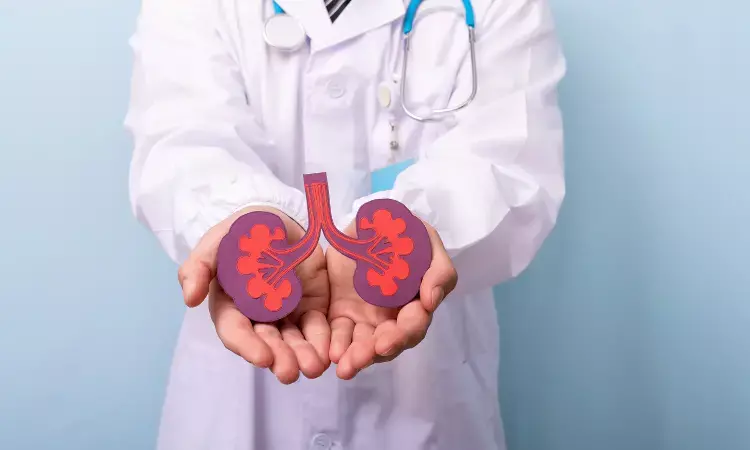- Home
- Medical news & Guidelines
- Anesthesiology
- Cardiology and CTVS
- Critical Care
- Dentistry
- Dermatology
- Diabetes and Endocrinology
- ENT
- Gastroenterology
- Medicine
- Nephrology
- Neurology
- Obstretics-Gynaecology
- Oncology
- Ophthalmology
- Orthopaedics
- Pediatrics-Neonatology
- Psychiatry
- Pulmonology
- Radiology
- Surgery
- Urology
- Laboratory Medicine
- Diet
- Nursing
- Paramedical
- Physiotherapy
- Health news
- Fact Check
- Bone Health Fact Check
- Brain Health Fact Check
- Cancer Related Fact Check
- Child Care Fact Check
- Dental and oral health fact check
- Diabetes and metabolic health fact check
- Diet and Nutrition Fact Check
- Eye and ENT Care Fact Check
- Fitness fact check
- Gut health fact check
- Heart health fact check
- Kidney health fact check
- Medical education fact check
- Men's health fact check
- Respiratory fact check
- Skin and hair care fact check
- Vaccine and Immunization fact check
- Women's health fact check
- AYUSH
- State News
- Andaman and Nicobar Islands
- Andhra Pradesh
- Arunachal Pradesh
- Assam
- Bihar
- Chandigarh
- Chattisgarh
- Dadra and Nagar Haveli
- Daman and Diu
- Delhi
- Goa
- Gujarat
- Haryana
- Himachal Pradesh
- Jammu & Kashmir
- Jharkhand
- Karnataka
- Kerala
- Ladakh
- Lakshadweep
- Madhya Pradesh
- Maharashtra
- Manipur
- Meghalaya
- Mizoram
- Nagaland
- Odisha
- Puducherry
- Punjab
- Rajasthan
- Sikkim
- Tamil Nadu
- Telangana
- Tripura
- Uttar Pradesh
- Uttrakhand
- West Bengal
- Medical Education
- Industry
Novel capped-needle device may eliminate air bubble during hemodialysis, study finds

Japan: In a new study published in the Karger journal Blood Purification, it was shown that the innovative capped needle efficiently and successfully eradicated all apparent bubbles; hence, it might be a helpful device for hemodialysis therapy.
Once automated priming, air bubbles in the dialysis circuit are seldom apparent; however, they are frequently evident after the needles are manually linked to the circuit. To avoid this problem, it was recommended that needles be primed automatically by the hemodialysis machine. Shibata K. and colleagues developed and produced a unique capped needle to link the needles to the extracorporeal circuit prior to the automated priming of the hemodialysis machine. This study evaluated the efficiency of this unique capped needle to the standard approach for avoiding air bubbles.
Ten different capped needles were evaluated to see if the dialysis machine operates properly and eliminates air bubbles even with the connected capped needle. Following that, 25 trials were conducted using the traditional procedure, in which professional nurses physically connected the needle. The air bubbles were recorded extensively with naked eyes in both procedures. It was projected that the capped needle would leave minimal bubbles in the circuit. A further experiment was performed utilizing a microparticle counter to assess the size and quantity of bubbles in order to evaluate fewer bubbles.
The main findings of this study were as follows:
1. During each of the 10 tests, researchers meticulously sought for air bubbles but found none that could be seen with the naked eye.
2. Bubbles were evident in 29 of 50 instances using the traditional approach.
3. The capped-needle approach produced much fewer bubbles than the usual method (p 0.0001, Pearson's χ2 test).
4. When the innovative capped needles were used for priming, the average residual air volume in the extracorporeal circuit was 0.0999 ± 0.2438 nL in the additional studies utilizing the microparticle counter.
In conclusion, the authors suggested that the removal of air from the dialysis circuit may enhance the prognosis of the patient.
Reference:
Shibata, K., Shinzato, T., Toma, S., Nakai, S., Kobayashi, Y., Hashimoto, T., & Tamura, K. (2022). Novel Capped-Needle Device: A Novel Safety Feature to Eliminate Air Bubbles in Hemodialysis. In Blood Purification (pp. 1–6). S. Karger AG. https://doi.org/10.1159/000524357
Medical Dialogues consists of a team of passionate medical/scientific writers, led by doctors and healthcare researchers. Our team efforts to bring you updated and timely news about the important happenings of the medical and healthcare sector. Our editorial team can be reached at editorial@medicaldialogues.in.
Dr Kamal Kant Kohli-MBBS, DTCD- a chest specialist with more than 30 years of practice and a flair for writing clinical articles, Dr Kamal Kant Kohli joined Medical Dialogues as a Chief Editor of Medical News. Besides writing articles, as an editor, he proofreads and verifies all the medical content published on Medical Dialogues including those coming from journals, studies,medical conferences,guidelines etc. Email: drkohli@medicaldialogues.in. Contact no. 011-43720751


